
- Home
- News
- Analysis
- States
- Perspective
- Videos
- Education
- Entertainment
- Elections
- World Cup 2023
- Features
- Health
- Business
- Series
- Economy Series
- Earth Day
- Kashmir’s Frozen Turbulence
- India@75
- The legend of Ramjanmabhoomi
- Liberalisation@30
- How to tame a dragon
- Celebrating biodiversity
- Farm Matters
- 50 days of solitude
- Bringing Migrants Home
- Budget 2020
- Jharkhand Votes
- The Federal Investigates
- The Federal Impact
- Vanishing Sand
- Gandhi @ 150
- Andhra Today
- Field report
- Operation Gulmarg
- Pandemic @1 Mn in India
- The Federal Year-End
- The Zero Year
- Premium
- Science
- Brand studio
- Home
- NewsNews
- Analysis
- StatesStates
- PerspectivePerspective
- VideosVideos
- Entertainment
- ElectionsElections
- Sports
- Loading...
Sports - Features
- BusinessBusiness
- Premium
- Loading...
Premium
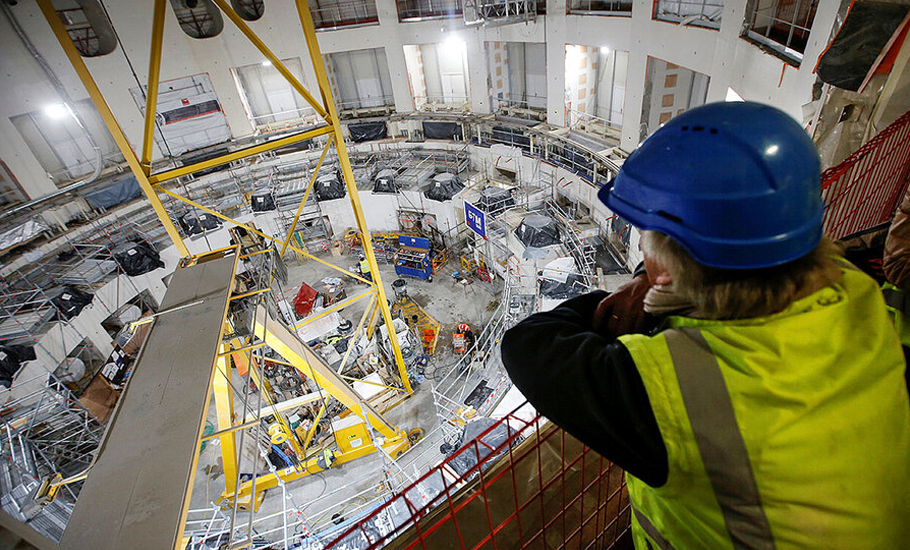
Powered by Kremlin, the world is busy capturing the Sun in a bottle

A cryptic note, “I know the secret of the hydrogen bomb”, was received at the Central Committee of the Communist Party of Soviet Union (CPSU) in the early 1950s. Not many would have imagined that it would spark a quest resulting in a 35-year collaboration between China, the European Union, India, Japan, Korea, Russia and the United States to build the International Thermonuclear...
A cryptic note, “I know the secret of the hydrogen bomb”, was received at the Central Committee of the Communist Party of Soviet Union (CPSU) in the early 1950s. Not many would have imagined that it would spark a quest resulting in a 35-year collaboration between China, the European Union, India, Japan, Korea, Russia and the United States to build the International Thermonuclear Experimental Reactor (ITER) at Saint-Paul-lès-Durance, Southern France. Billed as the ‘artificial mini-sun’ on Earth, the ITER fusion reactor will mimic the process that makes the Sun blaze. After years of waiting, the reactor’s construction finally commenced in 2020 and is expected to be operational by 2035.
Usually, such notes, considered crackpot, are consigned to the dustbin; but the Kremlin decided to check out. To his amazement, the Kremlin official tasked to enquire about the letter’s author found Oleg Alexandrovich Lavrentiev, a Soviet soldier stationed at the Sakhalin island, to be a school dropout. After completing seven years of schooling, as the Nazis invaded the Soviet Union, Lavrentiev had volunteered to join the Red Army. Nevertheless, inspired by the book Introduction to Nuclear Physics, chanced upon at the impressionable age of 12, Lavrentiev kept alive his dream to build a fusion reactor, an artificial star on Earth. After the war, stationed in the recently liberated Sakhalin, Lavrentiev had spent all his time reading college and technical books related to nuclear physics from the local library.
Impressed with the perseverance, CPSU asked Lavrentiev to submit an elaborate proposal. On July 29, 1950, the report was promptly passed on to the legendary Soviet physicist Andrei D Sakharov, leading the Soviet nuclear programme. Lavrentiev had suggested an ingenious method to create thermonuclear fusion, the very same process through which Sun produces energy, in a laboratory. Delighted, Sakharov took the idea to his mentor, the doyen soviet physics Igor E Tamm. The rest, as they say, is history.
The flicker became a flash, spark, flame, and blaze.
What makes the Sun tick?
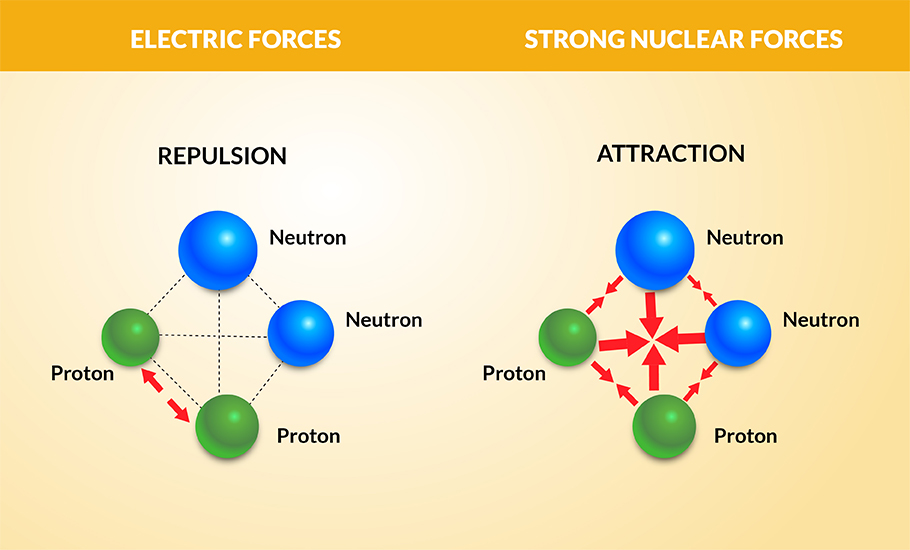
The secret behind the blazing Sun is the furtive ‘strong nuclear force’, or nuclear force for short. Like charges repel and unlike charges attract. Hence one would expect the positively charged protons in the nucleus to repel each other and fly apart. However, despite the immense repulsive force of 92 positively charged protons, uranium is still a stable element. The attractive strong nuclear force between the neutrons and protons inside the nucleus countervails the repulsive force between the protons and keeps the atomic nucleus stable.
The nuclear force is the strongest of all the four fundamental forces of nature (the other three being gravity, the electromagnetic and weak nuclear force). The strength of all the forces diminishes with distance. Light becomes dimmer, and gravitational pull becomes feeble. Each time distance is doubled, intensity is reduced by a factor of four. The strength of the strong force too declines with distance, but much more rapidly. Beyond the typical size of an atomic nucleus, the strong force’s grip completely vanishes. We do not experience strong nuclear force outside of the atom.
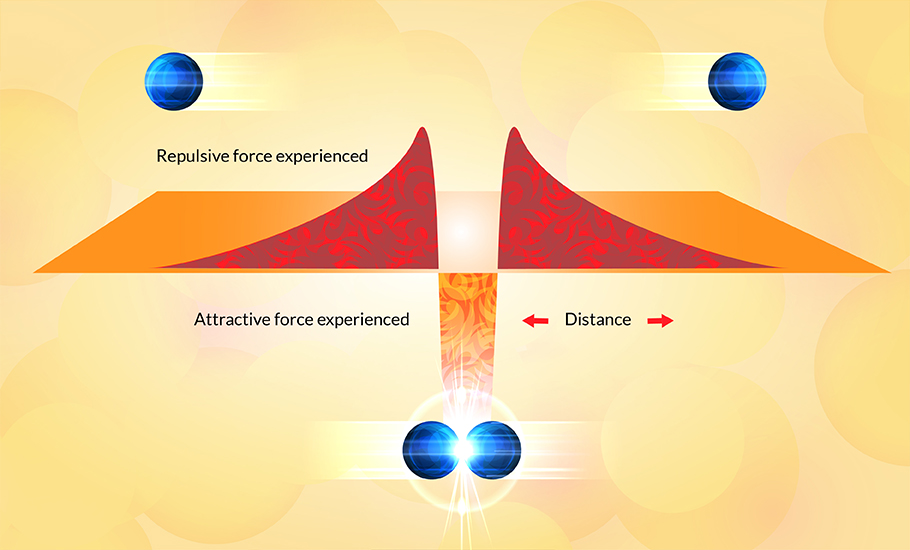
If two protons are somehow coxed to come close enough, like the mythical Dhritarashtra’s clasp, the strong nuclear force would overwhelm the mutual electrostatic repulsion and fuse them together.
The Sun is mostly hydrogen sprinkled with little helium and tiny amounts of carbon, nitrogen, iron, etc. At the belly of the Sun, squeezed by the grinding gravity, it is blazing hot at 15 million degrees Celsius. Energised by the fiery heat, electrons are ripped apart from the hydrogen atoms, leaving a soup of negatively charged free electrons and positively charged hydrogen nucleus ions. Thus the matter at the core of the Sun is in the plasma state, the so-called fourth state of matter (the other three being solid, liquid and gas).
Being 3,33,000 times more massive than Earth, the brutal weight of the Sun exerts 200 times of atmospheric pressure at the core. In addition to being broiling hot, the core is also a very dense place; it is 150 times denser than water. In these gruelling circumstances, the furiously whizzing positively-charged hydrogen nuclei overcome the electrostatic repulsion and violently collide with other hydrogen nuclei.
Once in a while, the protons will come so close that the attractive strong force would overpower repulsing electrostatic forces and fuse them. Ultimately, four hydrogen nuclei fuse to create a heavier helium-4 nucleus and release colossal energy. Despite the arduous heat and pressure at the core of the Sun, only one in ten octillion (10^28) times the protons would be able to fuse. Yet, given the massive number of hydrogen at the core, every second, a whopping four hundred undecillion (4 × 10^38) protons fuse into helium-4.
Each proton has a mass of 1.007825 atomic mass unit (AMU); therefore, four will have a combined mass of 4.031300. However, the mass of the helium nucleus is only 4.00260 AMU. The mass difference, 0.02870 AMU, is converted into energy from the interchangeable nature of mass and energy, or what is known as Einstein’s famous E=mc2 equation. Every time four protons fuse into a helium-4 nucleus, 26.72 MeV of energy is released. At this rate, one gram of hydrogen fusing into helium would release energy enough to keep a 60W bulb burning for more than 25 years.
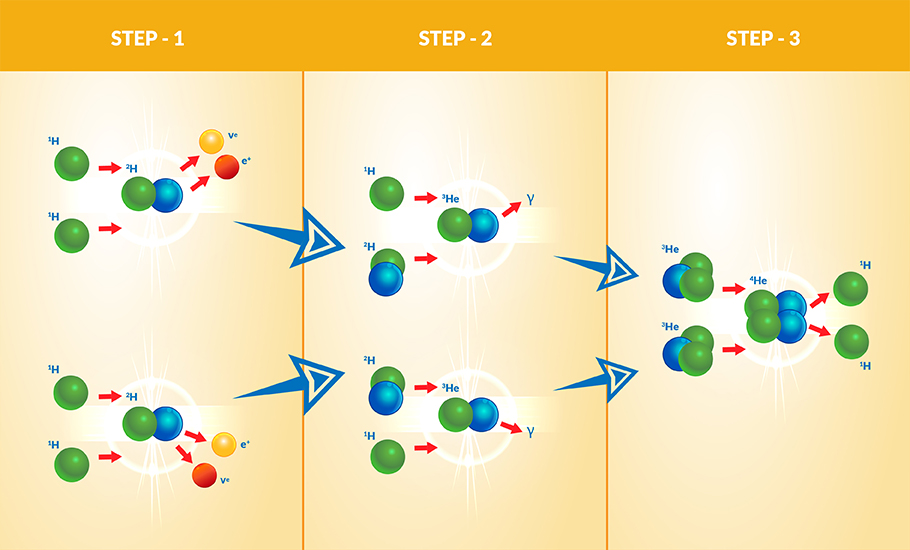
Every second, at the core of the Sun, 620 million metric tons of hydrogen fuse to make 616 million metric tons of helium. The remaining four metric tons of mass are converted into energy and radiated by the Sun.
How to hold the Sun in your hand
Three conditions must be fulfilled to achieve fusion in a laboratory. First, the hydrogen nucleus must be heated to a temperature of 150 million degrees, ten times the temperature at the core of the fiery Sun, to provoke high-energy collisions. All the hydrogen atoms’ electrons will be ripped apart at this temperature, creating a hot plasma.
Heating is the least of the problems. Like any hot gas, hot plasma at million-plus degrees will expand. Any physical container would melt at these temperatures. Yet one must find a magic wand that can hold the hot fiery plasma without letting it ever touch the reactor vessel’s walls. This is the second challenge. Third, the plasma must be sufficiently dense to increase the likelihood of violent collisions. This implies it is not enough to create the sizzling hot plasma; one needs to pinch and press it tightly for the fusion to occur.
Lavrentiev had suggested suspending the plasma in a vacuum jar with electrostatic forces. Sakharov, Tamm, and scientists realised that the electrically charged plasma particle could be tamed in a magnetic field.
A magnetic field is created perpendicular to the direction of the electric current. Take a hollow tube, wind a coil around it and apply electrical current. A strong magnetic field is concentrated in the hole. Like the magnetic lines of force come out of one pole of a bar magnet arching to the other pole, the magnetic force lines go straight from the end of the tube to another end. In this setup, the charged particles in the plasma faithfully follow the magnetic field lines as if they were invisible rails.
Applying a strong current, the magnetic field lines become tighter, and the plasma will be squeezed. Apply even more current; the plasma will draw together and hang mid-air in the middle of the hollow tube. Bewitched by the magnetic force lines, the plasma particles can be held away from the walls of the hollow tube.
The genie can be contained in this magnetic bottle. What’s more, if the current is further stepped up, the plasma could compress even further, and in that moment of pinch, the ions can come close enough to fuse. This is the simple primary mechanism of a fusion reactor.
The devil is in the details. A hollow tube has a hole at both ends. Plasma particles travelling along the magnetic field lines will leak out in a blink of an eye. To hold the plasma long enough to start thermonuclear fusion, we must close the ends of the magnetic bottle.
Andrei Sakharov and Igor Tamm came up with an ingenious solution in the 1950s. Why not bend the hollow tube to make one end touch the other. The resultant shape, which mathematicians call tours, resembles the south Indian methuvada or doughnut. The magnetic lines of forces from one end of the tube will join with its tail from the other end, forming close loops, like latitudes on the globe.
The leak is arrested.
Imagine! If only life was that simple.
Taming the wayward plasma
Look at the windings of the coil around the tube. When the tube is linear, the space between each winding is even. When the tube is bent into a ring, the distance between the windings gets closer in the torus’s central hole compared to the torus’s outer circle. This will result in an imbalance in the magnetic line of forces. Due to the imbalance, the coiling plasma will drift sideways towards the walls of the tube.
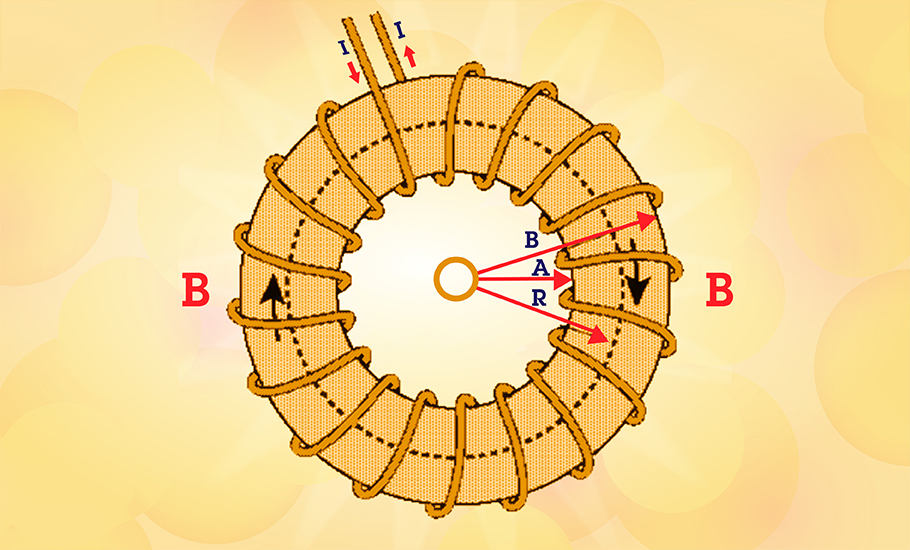
In the mid-1950s, at the clandestine fusion facility at Harwell, code-named ‘Tube Alloys’, tucked away from the prying public eyes, the British built one of the early methuvada-shaped ‘Zero Energy Thermonuclear Assembly’ or the ZETA reactor. Today this facility hosts the Joint European Torus (JET) facility of the joint European Fusion Programme.
In the early days, the plasma in the ZETA played truant. The plasma ring will not stay stable beyond milliseconds. Slithering like a snake, the plasma ring leaked out of the magnetic bottle. How to tame the delinquent plasma was a key challenge.
While going on a curved road, the cyclist bends slightly inwards to generate the necessary centripetal force to counter the outward centrifugal force. Likewise, suppose we can make the closed-loop magnetic lines of force a gentle twist and helical shape. In that case, the delinquent drift of the plasma can be arrested. Travelling along the gently twisted and curled magnetic lines, the plasma is pushed away from the centre during one part of its journey and towards the centre in the remaining. Hence, the drift is arrested; plasma is tamed; a magnetic bottle can confine the plasma.
There are two ways one could twist the magnetic line of forces. By placing grotesquely shaped magnets around the tube, American scientist Lyman Spitzer developed a stellarator in 1951 as part of the top-secret Project Matterhorn at Princeton University.
Take a strip of paper, stick the ends, and get a loop; the ring of the paper strip has an inner side and an outer side. Before joining the ends of the strip, make a twist and stick the ends. The strange structure we get is called the Möbius loop. This loop has only onside!

Spitzer used distinctly shaped external magnets coiling around the tube to create magnetic field lines in a stellarator resembling a Mobius strip. Like plaits of hair, the plasma is twisted while moving around the ring. With the surreal-shaped external magnets, the stellarators look more like a jangiri/imarti than a methuvada.
After declassification in 1961, today, the Princeton Plasma Physics Laboratory (PPPL) is one of the leading fusion research centres in the world. Today’s most potent stellarator, Wendelstein 7-X, is at Greifswald, northern Germany, built by the Max Planck Institute for Plasma Physics and inaugurated on February 3, 2016.
The Soviets found the plasma drift in the early designs like everyone else. They placed a cylindrical magnet vertically at the central hole in a stroke of intelligence. This induced an electrical current in the plasma. The current in the plasma created an additional magnetic field that was longitudinal. The coils around the tube made loops of magnetic force lines along the latitudinal direction. The latitudinal lines created by the coil and longitudinal created by the current in the plasma combined to produce magnetic lines that are circular helix, like a corkscrew or spiral staircase. There was no need to design and build ugly shaped magnets to tame the plasma as in a stellarator. Eventually, the Soviets named this device Tokamak, a Russian acronym for ‘toroidalnaya Kamera s magnitnymi katushkami’, meaning toroidal chamber with magnetic coils.
Soviets experimented with toroidal configurations in the mid-1950s and produced the first Tokamak, later named T1, in 1957. Like the British and the Americans, the Soviets too conducted the research in secrecy. The laboratory was named innocuously as ‘Laboratory of Measuring Instruments of the USSR Academy of Sciences’ (LIPAN). After the declassification in the late 1960s, it became the famed IV Kurchatov Institute of Atomic Energy. In their zeal to conceal the research results from falling into the British and American spies, they went a step further and invented a whole new code language. For example, the phrase `high-altitude goo in a jet’ in one of the technical reports from those days actually meant ‘high-temperature plasma in a magnetic field’; ‘goo’ -designating the plasma, ‘altitude’ meaning temperature and ‘jet’ to designate magnetic field and so on.
Race to build a ‘Sun on Earth’
Soviets and Americans were surprised to read the headlines in the London Daily Sketch on the morning of January 25, 1958, which screamed ‘A sun of our own’. During the experiments with the ZETA in August 1957, the British used deuterium instead of hydrogen. Deuterium, also called heavy hydrogen, is an isotope with one proton and one neutron in its nucleus. When the current was increased to some 2,00,000 amps, with deuterium inside, suddenly zillions of neutrons began to rush out in all directions out of the five-million-degree plasma from the British ZETA machine. The British were tempted to think that the neutron emission was the telltale sign of controlled thermonuclear fusion. Although the research was secret, the news was juicy, and the story leaked out. British researchers cautiously made a claim of possible thermonuclear fusion. The press went to town.
Has the old lion beaten both the American and the Soviets in the race to create an artificial thermonuclear reaction? The Soviets were livid reading the news, but they were unconvinced. However, they had no way of finding out.
The fusion research in the UK, the USA, and the USSR were classified until then. The scientists in one country were in the dark about the developments elsewhere. However, the secret of science is its openness. Sceptical and critical eyes detect flaws, spotted inaccuracies, and specious notions are weeded out. Trial by fire makes the science reliable and robust. In the absence of an open and lively critical examination of claims, everyone was on edge.
Following Nikita Khrushchev’s détente, the Soviets took steps to open up. Soviet physicist Kurchatov visited Harwell in 1955 and agreed to give a talk on advances in thermonuclear research in the Soviet Union. The scientists from the West were pleasantly surprised. He unveiled the Tokamak and elucidated the research findings for the first time. He warned against mistaking the emission of neutrons as the sign of successful thermonuclear fusion. Soviets found that hot plasma can emit neutrons without actual thermonuclear fusion.
The British scientists were stupefied; they had so much to ask and clarify. However, they could not ask searching questions without giving up on their research findings. The official secrets act prevented them from speaking up.
In the next few years, the Soviets took even a bolder step. Before the 2nd Geneva Conference on Peaceful Uses of Atomic Energy in 1958, the Soviets declassified their research. They published a four-volume Plasma Physics and Problems of Controlled Thermonuclear Reactions edited by MA Leontovich, a leading soviet fusion researcher. Soon the British and the world were convinced that the Soviets were way ahead in the game.
The Soviets had built their first Tokamak machine, made from porcelain and copper, way back in 1957. However, in the extreme heat, the atoms from porcelain leached into the chamber and contaminated the plasma. The soviets switched to stainless steel and built one in 1958, later named Tokamak -1 or T1 reactor. By the mid-1960s, Lev Artsimovich and Mikhail Leontovich designed a T3 that could reach temperatures of 10 million degrees and held the plasma for more than 10 milliseconds, tenfold better than the American British fusion reactors.
The researchers in the West were stunned; it was time for the West to look at the Soviet claim with suspicion. A sceptical British research team visited Moscow to see for themselves and measure the claims in 1969. During the Cold War, the Soviets opened their fusion research lab to the visiting British team in a unique gesture.
With the British team confirming the Soviet claims, a veritable stampede for construction of Tokamak began. The Americans converted the stellarator at Princeton into a Tokamak. France, Japan, Germany and the British took the Tokamak route.
Of the many designs to tame the plasma and coax them to fuse, Tokamak seemed the best bet. Designing and constructing the complex magnets for the stellarator proved daunting, whereas scaling up Tokamak to hold more and more plasma appeared simple. Competing designs were shelved, and Tokamak seemed the road ahead. All in all, more than 200 Tokamaks, small and big, have been built worldwide.
Pyramid of our era
With more than one million components and ten million parts, ITER Tokamak, the most complex machine ever built, is seen as the last stop before realising large-scale energy generation from controlled thermonuclear fusion.
The vacuum chamber is the heart of a Tokamak. Before the operation, the chamber is emptied of all the air and other impurities. Next, the magnets are switched on, and gaseous fuel, a mixture of deuterium and tritium, is injected. Deuterium and tritium are different flavours of hydrogen (called isotopes). While simple hydrogen has alone proton in its nucleus, deuterium has a proton with a neutron and tritium has a proton and two neutrons.
Three concurrent methods are used in the Tokamak to heat the plasma in the core of the machine to 150 million degrees, ten times the temperature at the centre of the Sun. The high intense electrical field created by magnetic induction makes the atoms energised. They become hot and lose all their electrons as particles collide, transforming into a plasma state. Once the plasma is produced, like steam is used to heat the coffee in an espresso machine, a neutral beam, particles with no charge, is injected at high velocity. The plasma gains energy from the collisions of neutral particles on the ions. Electromagnetic waves at very high frequencies are targeted at the plasma to further elevate the temperature. Like the microwave oven heats up the food, the injected electromagnetic waves transfer heat to the plasma.
You need to light the wick of the candle only once. The heat released from the burning wig sustains the combustion and keeps the wick ignited. Likewise, scientists anticipate, given the large size of the plasma chamber, that once the fusion takes place, the heat released would be able to sustain the temperature without the need for external heating. The ‘burning plasma’, the hot fiery helium produced from the fusion, they hope it will maintain the heating of the plasma.
Powerful superconducting magnetic coils, weighing about 10,000 tonnes and running into 1,00,000 km, made with niobium-tin (Nb3Sn) or niobium-titanium (Nb-Ti) shape the plasma inside the hallow vacuum chamber. When cooled to -269 °C or 4 kelvin, these metals suddenly become powerful magnets that produce 51 Gigajoules (GJ) of magnetic energy. Using the powerful magnetic force, the plasma is controlled.
The vada-shaped vacuum vessel, 8,500 tonnes in all, is made with double steel walls. The inner wall of the chamber is tiled with 440 blanket modules made of high-strength copper and stainless steel coated with beryllium. These blanket walls absorb the fast neutrons released by the fusion reaction and convert them into heat energy. Water circulates between the double walls removing the heat generated during the operation. The heat is used to make steam, which drives a turbine connected to a dynamo, producing electricity.
The superconducting magnets enveloping the vacuum chamber need an ultra-cool environment. Hence the whole assembly of the vacuum vessel, with double-wall and magnets, are housed in a vast cryostat, a device used to maintain low cryogenic temperatures, incidentally designed, developed and produced in India.
Chimaera or certainty
The road to ITER was built in fits and starts. The initial enthusiasm in the 1950s slowly waned as generating and controlling plasma proved too demanding. The Tokamak brought in new hope in early 1970, only to be belied by the sudden and inexplicable disruptions in the shape of the beam, resulting in the quenching of the plasma. Fake claims and delusions hampered. A Nazi scientist taking refuge in Argentina falsely claimed that he had achieved fusion in his experimental reactor. Stanley Pons and Martin Fleischmann in 1989 announced they had found a way to make fusion in a simple electrolysis cell. The excitement over the ‘cold fusion’ soon turned sour when the scientific community concluded that the findings were not authentic.
With the tumults history, no wonder the ITER attracts raised eyebrows. Yet, the machine assembly commenced with the installation of the cryostat base in May 2020. The construction racing to be complete before 2025. European Union, Switzerland, China, India, Japan, Korea, Russia, and the United States contribute by designing and producing various parts of the ITER Tokamak, the world’s largest Tokamak, with ten times the plasma volume of the largest Tokamak, JET, operating today.
While the world waits and watches in anticipation for the ITER to succeed, it is for sure that one day, humanity will undoubtedly be able to control the nuclear fusion, provided it does not die of uncontrolled fusion first.
(The story first appeared in The Eighth Column on April 13.)

